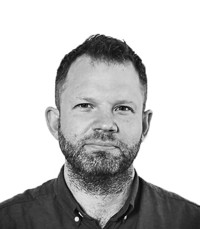Telemedicine consultations for patients with diabetic foot ulcers
Diabetes may cause deep and complicated foot ulcers that take a long time to heal and which can often lead to amputation when the ulcers do not heal.
PROJECT PERIOD
Start: 2012
End: 2015
To spare the patient numerous visits to the hospital with possibly long transportation time, the Region of Southern Denmark started to offer a telemedicine service that can treat the patients at home instead of at the hospital. Along with the telemedicine service, a PhD project was initiated to evaluate the effects of the new service.
In the telemedicine service, only every third control of the diabetic foot ulcers takes place at the hospital, and the two remaining consultations take place at home. A municipal nurse specialised in complex foot ulcers treats the patient’s ulcer at home and sends pictures of the ulcer to an electronic journal. Afterwards, specialists from the centre for ulcers at the hospital can view the pictures in the journal and guide and supervise continued care and treatment. As a result, the patient does not have to come to the hospital as often as previously.
When launching telemedicine consultations for foot ulcers, in which the images of the ulcers combined with manual measures of the size of the ulcer are essential for the treatment, the idea emerged to develop a special camera that combines regular images with 3D technology to provide more comprehensive data about both size and depth of the ulcers. Consequently, the PhD project launched a side project to develop a prototype of a 3D camera in collaboration with a local company.
AIM
The goal of the PhD study was to determine whether a telemedicine service for monitoring diabetic foot ulcers could be a valuable alternative to conventional treatment. The study also examined the development in amputations in patients with both diabetes and other causes of amputation as a surrogate marker of the effects of the diabetic foot ulcers.
The additional project was a feasibility study of a newly developed 3D imaging camera created to monitor foot ulcers as an alternative to taking photos with an iPhone. The hope was that a 3D camera could be an accurate method for determination of wound area and volume. The hope was that the 3D scanner would identify the size and depth of the foot ulcer faster and more accurately than the existing manual measuring methods and be a valuable tool for the telemedicine service where the hospital wound experts do not examine the ulcers physically as often as in the conventional care process.
RESULTS
The study showed that the treatment of diabetes patients with complex foot ulcers in the Region of Southern Denmark has improved in recent years, as shown by a reduction in the number of amputations.
Telemedicine as a monitoring method did not show a significant change compared to conventional treatment when measured by amputations and healing rate. On the contrary, there was a higher mortality rate for patients whose ulcers were monitored with the telemedicine service. We do not know the reason for this finding but a possible explanation is that many diabetes patients also have many other complications besides foot ulcers, and that the lack of hospital visits to have the ulcers checked meant that these complications were not discovered and taken care of in the early stages.
The 3D camera prototype provided high accuracy in relation to measuring the size and surface of foot ulcers and proved to be a useful method to document development or healing of the foot ulcer, especially as a tool to improve the telemedicine service.
The company Teccluster is still working on developing a market-ready version of the camera, which has been evaluated in a PhD study validating the clinical effects and the potential of introducing the technology into the ulcer treatment at the hospital.
ASSESSMENT
In collaboration with PhD student Benjamin S. Rasmussen, the clinical, organisational and economic effects were studied in a randomised study based on the MAST model.
Publications from the study can be found on the website of the University of Southern Denmark.
PARTNERS
The 3D camera was developed in collaboration with the company Teccluster.

Benjamin S. Rasmussen
Associate Professor, MD (Radiologist), Head of Clinical Research at CAI-X
Odense University Hospital, Department of Radiology and Centre for Clinical AI (CAI-X)
(+45) 2434 1749 benjamin.rasmussen@rsyd.dk CAI-X

Kristian Kidholm
Professor, Head of Research
Centre for Innovative Medical Technology (CIMT). Odense University Hospital, Dept. of Clinical Development - Innovation, Research & HTA
(+45) 6541 7960 kristian.kidholm@rsyd.dk

Knud Bonnet Yderstræde
Senior researcher, MD, associate professor
Department of Endocrinology, OUH & Department of Clinical Research, University of Southern Denmark
(+45) 6541 3427 knud.yderstraede@rsyd.dk
